Dog walking is a great way to keep your furry friend healthy and happy, but it can also be a strenuous activity for both the dog and the owner. One of the most important things to consider when embarking on a long dog walk is hydration. Just like humans, dogs need to stay properly hydrated to maintain their health and energy levels.
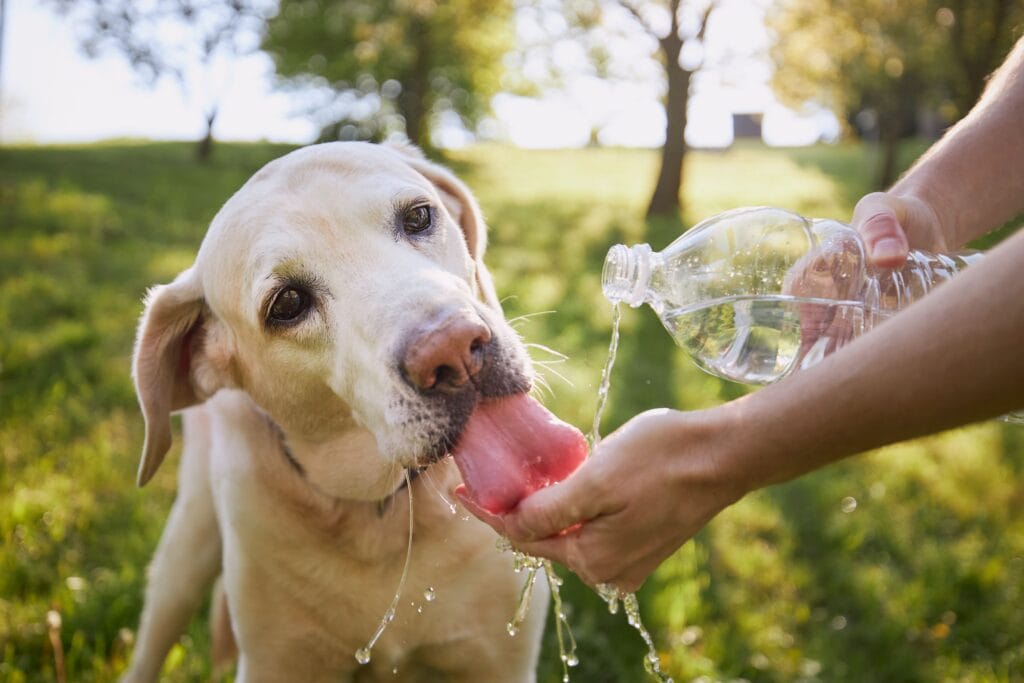
There are a few key tips to keep in mind when it comes to hydration during long dog walks. First and foremost, it's crucial to bring enough water for both you and your dog. This means packing a water bottle for yourself, as well as a collapsible bowl and plenty of water for your pup. It's also a good idea to plan your route around water sources, such as streams or lakes, to ensure that you have access to additional water if needed.
Understanding Canine Hydration

Signs of Dehydration
Dehydration is a common issue among dogs, especially during long walks. It is crucial to recognize the signs of dehydration to prevent serious health problems. Some common signs of dehydration in dogs include:
- Loss of skin elasticity
- Dry mouth and gums
- Sunken eyes
- Lethargy
- Decreased appetite
- Dark yellow urine
If your dog is experiencing any of these symptoms, it is essential to provide them with water immediately. You can also offer them small amounts of water at regular intervals during the walk to prevent dehydration.
Benefits of Proper Hydration
Proper hydration is essential for your dog's overall health and well-being. Some benefits of proper hydration include:
- Maintaining body temperature
- Lubricating joints
- Aiding in digestion
- Eliminating waste
- Transporting nutrients throughout the body
To ensure your dog is properly hydrated during long walks, it is recommended to bring along a portable water bowl and offer them water at regular intervals. You can also add some electrolyte supplements to their water to help replenish lost minerals during exercise.
Pre-Walk Hydration Strategies
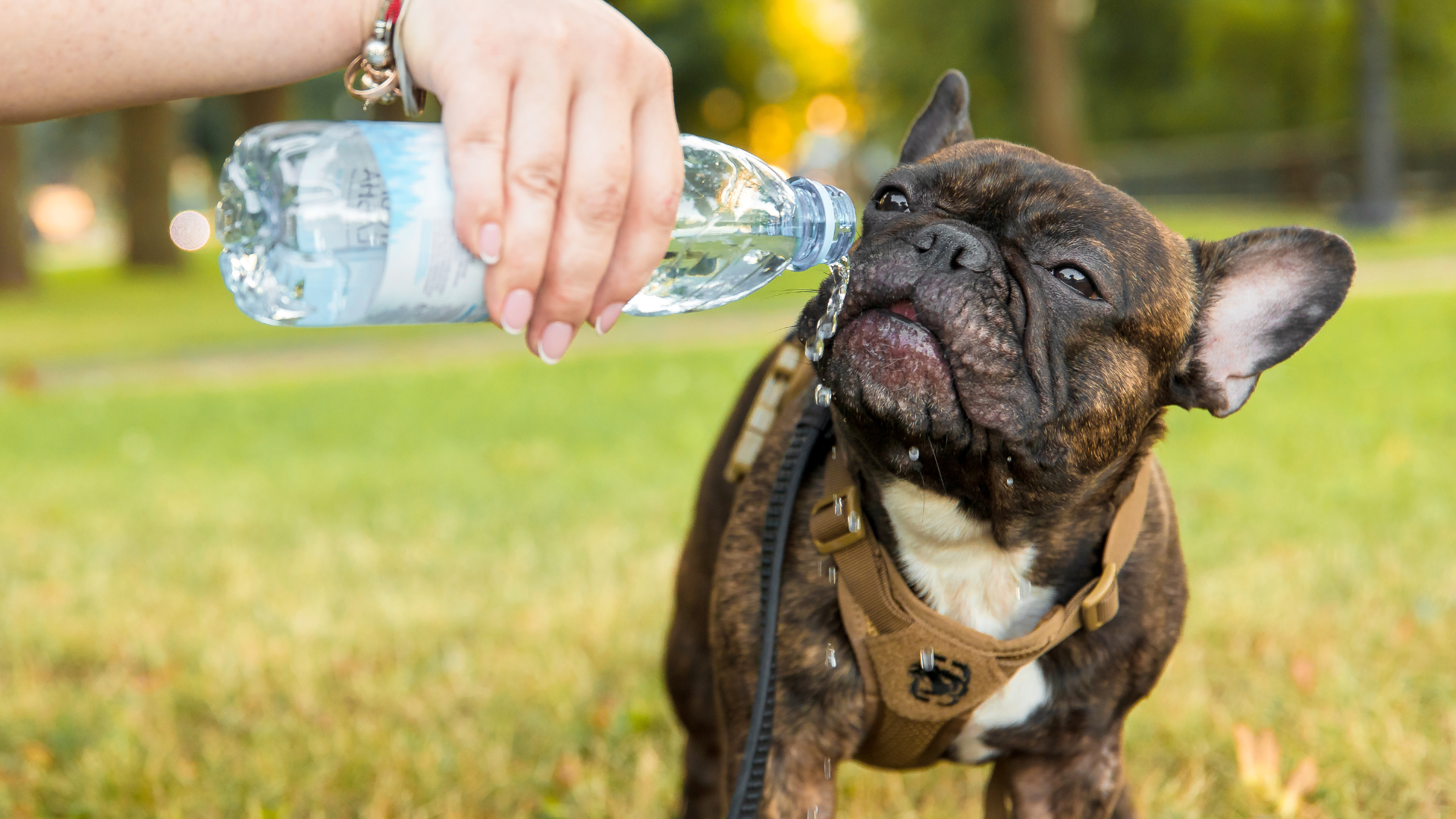
Timing Water Intake
Timing water intake is essential for dogs going on long walks. It is recommended to give them water at least 30 minutes before the walk. This will give their body enough time to absorb the water and eliminate any excess water through urination.
If the dog is dehydrated, it is best to give them water in small quantities over some time rather than giving them a large amount of water all at once. This will prevent them from becoming sick or bloated during the walk.
Measuring Water Intake
Measuring water intake is an important part of keeping your dog hydrated during long walks. The amount of water a dog needs depends on their size, breed, and activity level. A general rule of thumb is to give them one ounce of water per pound of body weight per day.
During long walks, it is necessary to carry enough water for the dog. A collapsible water bowl and a water bottle can be used to provide water to the dog during the walk. Keeping track of how much water the dog drinks will help in determining if they need more water or if they are drinking too much.
By following these pre-walk hydration strategies, dog owners can ensure that their furry friends stay hydrated and healthy during long walks.
Choosing the Right Water Containers
When going on long dog walks, it is essential to bring enough water to keep your furry friend hydrated. However, choosing the right water container can be overwhelming with so many options available. Here are two popular choices for portable dog water containers:
Portable Dog Water Bottles
Portable dog water bottles are a convenient option for dog owners who want to bring water on the go. These bottles come with a built-in bowl that allows your dog to drink directly from the bottle. They are also designed to be leak-proof, making them ideal for travel.
When choosing a portable dog water bottle, it is needed to consider the size of your dog and the length of your walk. A larger dog may require a bigger bottle, while a smaller dog may only need a small one. Additionally, if you plan on going on a longer walk, you may need to bring multiple bottles or a larger capacity bottle.
Collapsible Bowls
Collapsible bowls are another popular option for dog owners. These bowls are lightweight, easy to pack, and can be folded down to a compact size when not in use. They also come in various colors and designs, making them a stylish accessory for your dog.
When choosing a collapsible bowl, it is necessary to consider the material it is made from. Some bowls are made from silicone, while others are made from fabric or plastic. Silicone bowls are durable and easy to clean, while fabric and plastic bowls may not be as durable but are often more affordable.
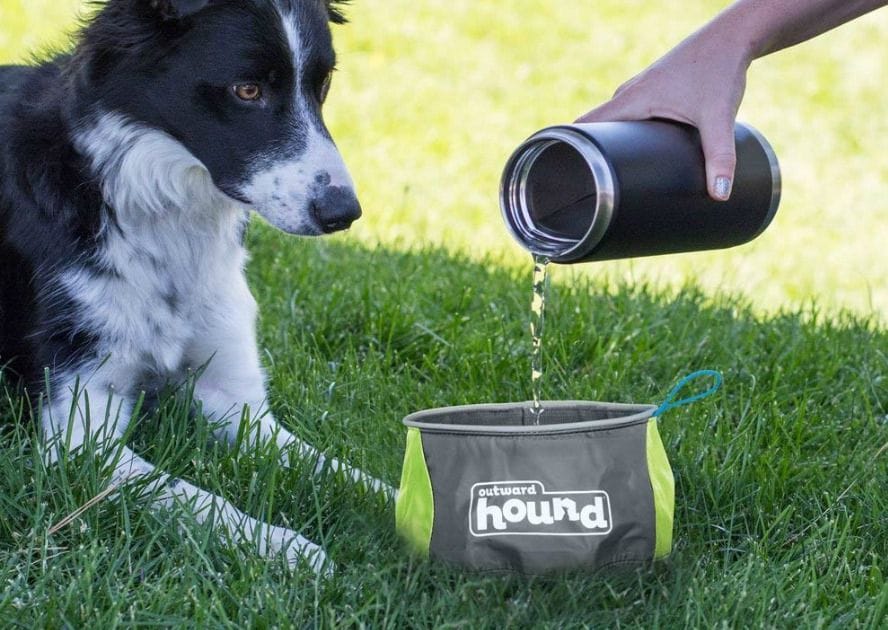
Thus, choosing the right water container for your dog depends on their specific needs and preferences. Both portable dog water bottles and collapsible bowls are great options for keeping your dog hydrated on long walks.
Water Breaks During Walks
When it comes to keeping dogs hydrated during long walks, taking water breaks is essential. Here are some tips on how to manage water breaks during walks.
Recognizing Thirst Cues
Dogs can't tell you when they're thirsty, so it's vital to recognize the signs. Some common thirst cues in dogs include panting, dry mouth, and lethargy. If you notice any of these signs, it's time for a water break.
Finding Water Sources on the Go
It's essential to plan and bring enough water for your dog, but sometimes unexpected situations arise, and you may need to find water sources on the go. Here are some tips for finding water sources:
- Look for natural water sources like streams, lakes, and rivers. However, be cautious of stagnant water as it can contain harmful bacteria.
- Bring a collapsible water bowl and fill it up at public water fountains or taps.
- Ask local businesses if they have a water bowl for dogs or if you can fill up your bowl.
Remember, it's demanded to keep your dog hydrated during long walks to prevent dehydration and heatstroke. Taking water breaks and finding water sources on the go are key strategies for keeping your furry friend healthy and happy.
Post-Walk Rehydration
Cool Down and Drink
After a long dog walk, both the dog and the owner need to cool down and rehydrate. Taking a few minutes to cool down can help prevent muscle soreness and fatigue. The owner should offer the dog some water immediately after the walk to replenish fluids lost during exercise.
It's recommended that the owner also drink water to replace fluids lost during the walk. The amount of water needed varies depending on factors such as the length and intensity of the walk, as well as the temperature and humidity. It's crucial to listen to your body and drink enough water to quench your thirst.
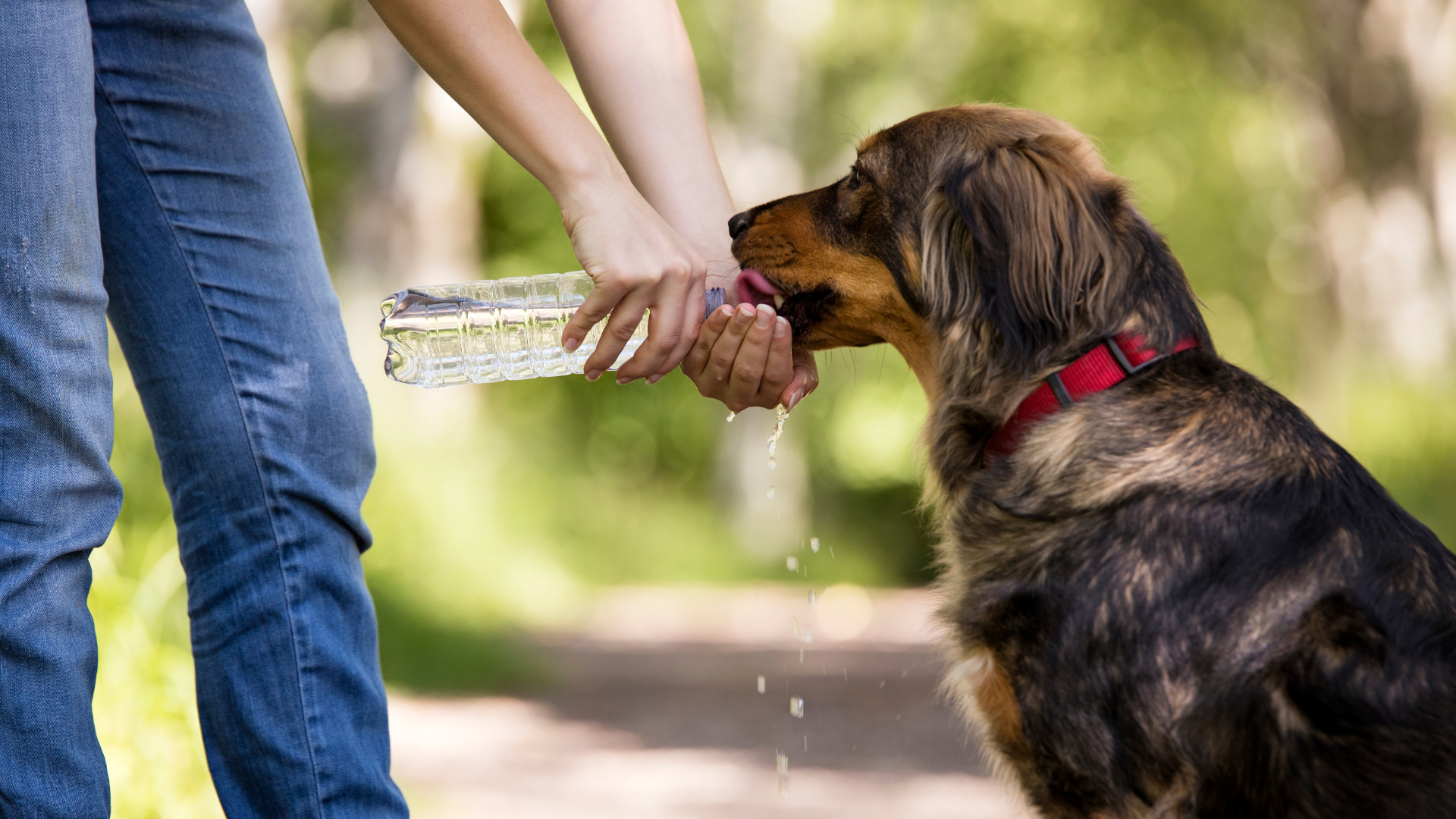
Monitoring Post-Walk Hydration
It's critical to monitor your dog's hydration levels after the walk. Signs of dehydration in dogs include dry gums, sunken eyes, lethargy, and loss of skin elasticity. If you notice any of these signs, offer your dog some water immediately.
To monitor your hydration levels, pay attention to the color of your urine. If it's dark yellow, you may be dehydrated and should drink more water. Additionally, you can weigh yourself before and after the walk to see how much water you've lost. For every pound lost, drink 16-20 ounces of water to replenish fluids.
Remember, proper hydration is essential for both the dog and the owner during and after long walks. By taking the time to cool down and drink water, and monitoring hydration levels, you can help prevent dehydration and promote overall health and well-being.
Seasonal Hydration Considerations
Summer Heat and Hydration
During the hot summer months, it's needed to pay extra attention to your dog's hydration needs. Dogs can easily become dehydrated when they are exposed to high temperatures for extended periods. Signs of dehydration include lethargy, dry mouth, sunken eyes, and loss of skin elasticity.
To prevent dehydration, make sure your dog has access to plenty of water throughout the day. Bring a collapsible water bowl and a water bottle on your walk, and offer your dog water frequently. You can also freeze water in a water bottle the night before your walk and bring it along to keep your dog's water cool and refreshing.
In addition to providing water, you can also help your dog stay cool by walking in shaded areas and avoiding the hottest parts of the day. If your dog is panting heavily or seems overheated, take a break in a shady spot and offer water.

Winter Concerns
While dehydration may not be as obvious during the winter months, it's still important to make sure your dog stays hydrated during long walks. Cold, dry air can cause your dog to lose moisture through their breath, and snow can also be dehydrating if your dog eats it.
To prevent dehydration, bring water on your walk and offer it to your dog frequently. You can also add a little warm water to your dog's food to help them stay hydrated. Keep in mind that your dog may not be as thirsty during the winter, so you may need to encourage them to drink by offering water frequently.
In addition to providing water, you can also help your dog stay warm and comfortable by dressing them appropriately for the weather. Consider a warm coat or sweater if your dog is short-haired or sensitive to the cold. And be sure to check your dog's paws for snow and ice buildup, as this can be uncomfortable and even painful for them.
Hydration for Different Dog Breeds and Sizes
Small Breeds
Small dog breeds, such as Chihuahuas and Pomeranians, have a higher metabolism and require more water than larger breeds. It is necessary to bring enough water for them to drink during long walks. A good rule of thumb is to bring at least one ounce of water for every pound of body weight. For example, a 10-pound dog should have at least 10 ounces of water available during a long walk.
Small breeds are also more susceptible to dehydration due to their smaller size and higher metabolism. Signs of dehydration in dogs include dry gums, lethargy, and sunken eyes. If you notice any of these signs, it is essential to stop and offer your dog water immediately.
Large Breeds
Large breeds, such as Great Danes and Mastiffs, have a lower metabolism and require less water than smaller breeds. However, they still need access to water during long walks. A good rule of thumb is to bring at least one liter of water for every hour of walking.
Large breeds are less susceptible to dehydration than smaller breeds, but it is still vital to monitor their water intake. Signs of dehydration in dogs include dry gums, lethargy, and sunken eyes. If you notice any of these signs, it is important to stop and offer your dog water immediately.
It is important to note that the amount of water a dog needs may vary based on factors such as age, activity level, and weather conditions. It is always better to bring more water than you think you will need, to ensure that your dog stays hydrated and healthy during long walks.
Dealing with Reluctant Drinkers
Encouraging Water Intake
Some dogs may be reluctant to drink water during long walks, especially if they are not used to it. To encourage water intake, owners can try the following:
- Bring a collapsible bowl and offer water frequently: Offering water regularly can remind the dog to drink and make it easier for them to do so. Collapsible bowls are lightweight and easy to pack, making them a great option for long walks.
- Use ice cubes: Some dogs may prefer cold water over room temperature water. Owners can bring ice cubes and offer them to their dogs as a refreshing treat that can also help keep them hydrated.
- Add flavor to the water: Adding a small amount of low-sodium chicken broth or tuna water to the dog's water can make it more appealing and encourage them to drink.
Using Water Additives
Water additives can also be used to encourage dogs to drink more water. Some options include:
- Electrolyte supplements: Electrolyte supplements can help replace lost minerals and encourage dogs to drink more water. However, owners should be careful not to give their dogs too much, as excessive electrolytes can be harmful.
- Hydration supplements: Hydration supplements contain electrolytes, vitamins, and minerals that can help keep dogs hydrated during long walks. These supplements can be added to the dog's water or given as a treat.
By using these tips and tricks, owners can help their dogs stay hydrated during long walks and prevent dehydration.
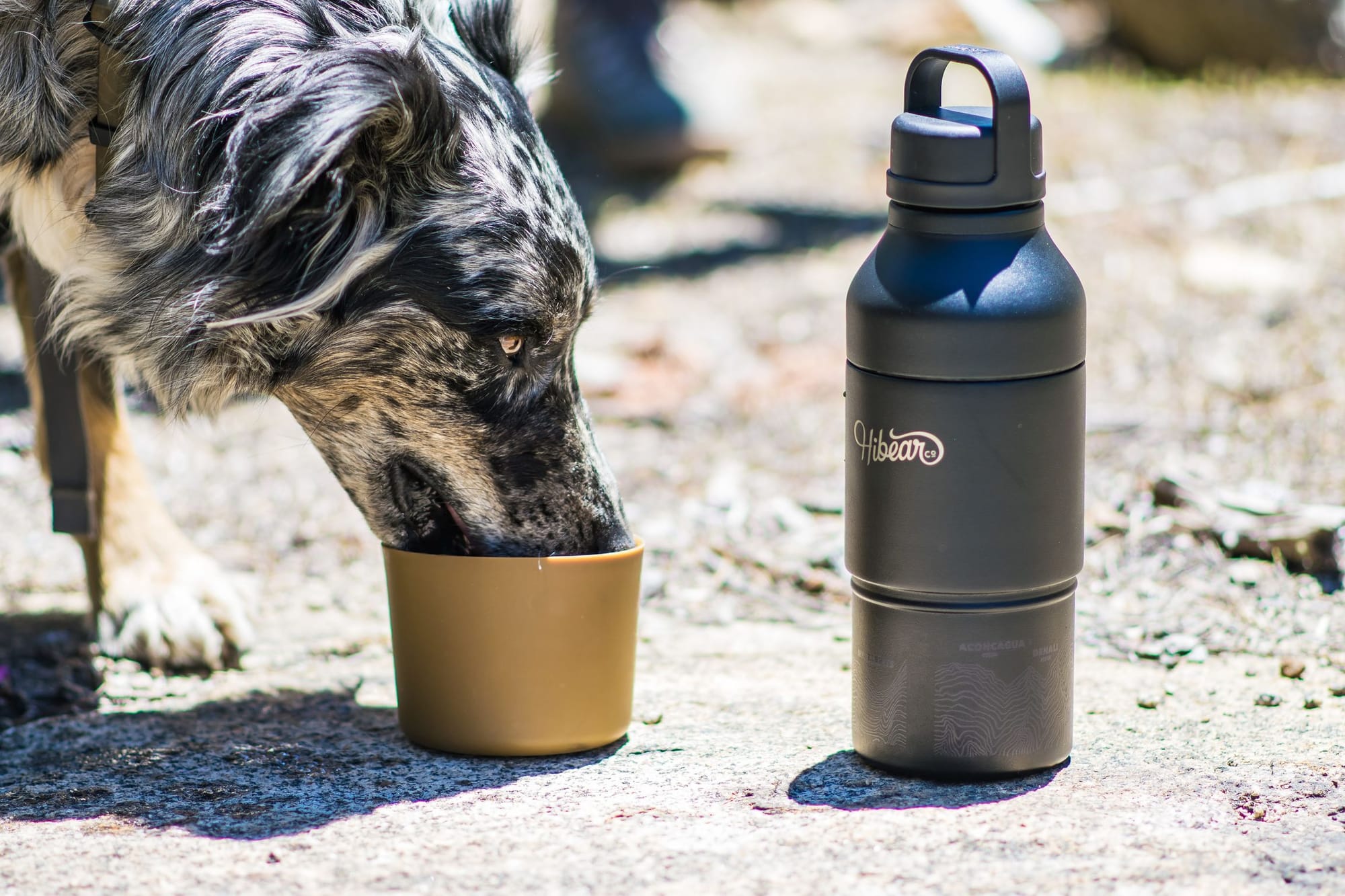
Final Words
Keeping your dog hydrated on long walks is crucial for their health and happiness. By understanding their needs, preparing adequately, and staying vigilant, you can ensure safe and enjoyable adventures together. Remember, a well-hydrated dog is a happy dog!
FAQs
- Q1: How much water should my dog drink on a long walk?
- A1: It depends on the size and activity level of your dog, but generally, offer water every 15-30 minutes during a long walk.
- Q2: What are the best hydrating treats for dogs?
- A2: Watermelon, cucumbers, and homemade frozen treats made with diluted chicken broth are excellent hydrating options.
- Q3: How can I tell if my dog is dehydrated?
- A3: Look for signs like excessive panting, dry nose and gums, sunken eyes, and lethargy.
- Q4: Can dogs drink too much water during a walk?
- A4: While rare, it's possible. Monitor their intake and look for signs of discomfort. Offering water in moderation throughout the walk is best.
- Q5: Are there any breeds that need more water than others?
- A5: Active breeds and larger breeds generally require more water, but always consider your dog's individual needs and behavior.




